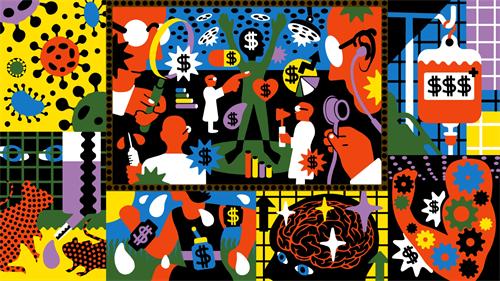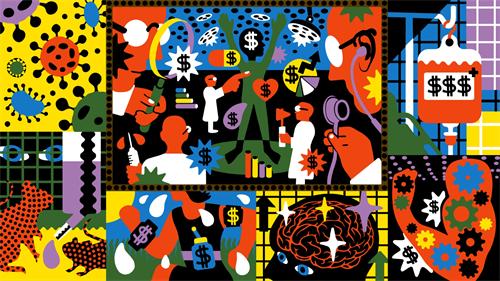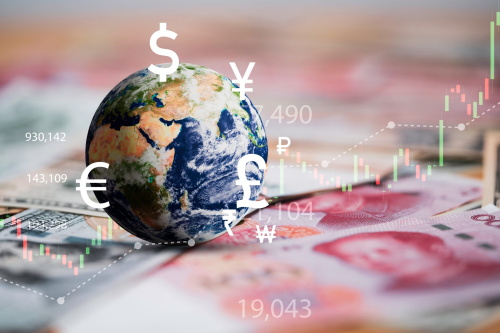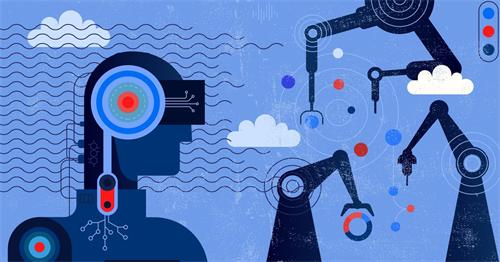Aging Population Plays: Genomics vs. Senior Living REITs

By 2050, the global population aged 60 and above is projected to reach a staggering 2.1 billion—more than double the figure in 2020—and will account for over 22% of the total global population. Countries like Japan, Germany, and Italy already have senior populations exceeding 30%, while China and the U.S. are also rapidly approaching deep aging phases.
Traditionally, aging has been viewed as a “heavy burden” on society—straining healthcare systems, squeezing pension funds, and shrinking labor markets. But from a different perspective, this "silver wave" is quietly spawning a range of new industry opportunities. From biotechnology and smart healthcare to senior housing investments, a massive “silver economy” is taking shape.
I. Japan’s “Silver Storm”: Aging Pain Points Driving Industrial Innovation
Japan, the world’s most aged society, established its long-term care insurance system in 2000, jointly supported by the government, corporations, and individuals. While initially perceived as a safety net, the system catalyzed the evolution of a trillion-dollar elder care industry.
From Panasonic’s smart care beds to Yamaha’s rehabilitation robots, and highly specialized services like in-home bathing assistance, cognitive care, and end-of-life support—each sector has birthed standout enterprises. This is the best proof of how “aging pain points” can be transformed into “technological advantages.” Rather than asking how to “support” the elderly, Japan focuses on how to help them live with dignity.
II. Genomics: Longevity Science Is No Longer Science Fiction
Advancements in modern biotechnology are bringing the dream of slowing aging closer to reality. Research shows that the aging process is regulated by specific genes—"Gerosgenes" that accelerate aging and "Gerosuppressors" that help delay it. Through gene editing, epigenetics, and personalized sequencing, scientists aim to predict, intervene, and potentially delay age-related diseases such as Alzheimer’s, cancer, and cardiovascular conditions.
This field has attracted significant investment—over $2.6 billion was poured into longevity tech in 2023 alone. Notably, women aged 55 and older are adopting genetic testing and early cancer screening at a pace several times faster than the general market, becoming a driving force behind precision health management.
III. Senior Living REITs: Infrastructure Dividends Through Asset Securitization
Population aging isn’t just creating healthcare pressures—it’s also reshaping spatial and housing demands. As family sizes shrink and multigenerational living declines, there’s rising demand for specialized, fully equipped senior housing. This trend gave birth to Senior Living Real Estate Investment Trusts (REITs).
These REITs pool capital to invest in retirement communities, nursing homes, and rehabilitation facilities, distributing returns to investors. They meet the specialized housing needs of seniors while offering investors steady cash flow and counter-cyclical opportunities.
Take the U.S.-based Welltower as an example: with over 300 senior housing properties and hundreds of care facilities, its equity valuation exceeds $60 billion, making it a giant in the sector. Singapore has also made strides in this space—First REIT and Parkway Life REIT hold significant influence in Southeast Asia’s healthcare and senior housing markets.
IV. Technology Is Redefining the Elderly Lifestyle
Modern technology—especially IoT, smart hardware, and big data analytics—is making home life safer, more comfortable, and more dignified for older adults. Age-friendly innovations such as smart home systems, remote health monitoring, and voice-controlled devices are redefining the concept of senior living.
Smart mattresses track heart rate and sleep quality, emergency buttons automatically trigger medical responses, and voice-controlled lighting systems help reduce fall risks. Remote healthcare platforms allow older adults to monitor chronic illnesses and connect with medical professionals without needing to leave their homes. Age-friendly design is evolving from single-purpose upgrades into systemic, sustainable solutions.
V. Lessons from Germany and the Netherlands: Aging as a Talent Dividend
Contrary to popular belief, aging hasn’t hindered innovation in Germany—it has fueled it. Hidden champions like Ottobock, a global leader in prosthetic and orthotic technology, serve elderly clients, amputees, and even athletes with high-performance joint technologies.
The Netherlands has taken things further by integrating lifelong learning into its national aging strategy. The country has established senior universities and vocational training centers. Here, 76-year-old programmers and 82-year-old therapists are not anecdotes but active participants in society. This model—dubbed “human capital reinvestment”—unlocks the productivity and wisdom of the elderly population.
VI. Five Investment Themes for the Silver Economy
The structural shifts driven by aging are poised to reshape consumption and industrial patterns over the next decade. To capitalize on these trends, investors can focus on:
- Medical Technology: Invest in gene testing, telehealth devices, chronic disease management platforms, and rehabilitation robotics.
- Smart Aging and Real Estate: Explore senior housing REITs, age-friendly home modifications, and smart community infrastructure.
- Integrated Service Platforms: Develop multi-functional platforms that combine healthcare, nursing, entertainment, and rehabilitation into one-stop solutions.
- Senior Talent Platforms: Promote lifelong education, skills retraining, and flexible employment to cultivate a “silver workforce” market.
- Financial Innovation: Design stable-yield investment products, reverse mortgages, and other financial tools tailored to seniors’ asset allocation and cash flow needs.
The irreversibility of population aging means it will be a defining theme of social development for decades to come. The question is: do we treat it as a looming challenge—or a generational opportunity worth positioning for early?
Whether it’s technological breakthroughs, industrial innovation, or financial instruments, all efforts ultimately serve a single purpose—to help the elderly live longer, healthier, and with greater dignity. That is the true value at the heart of the silver economy.



